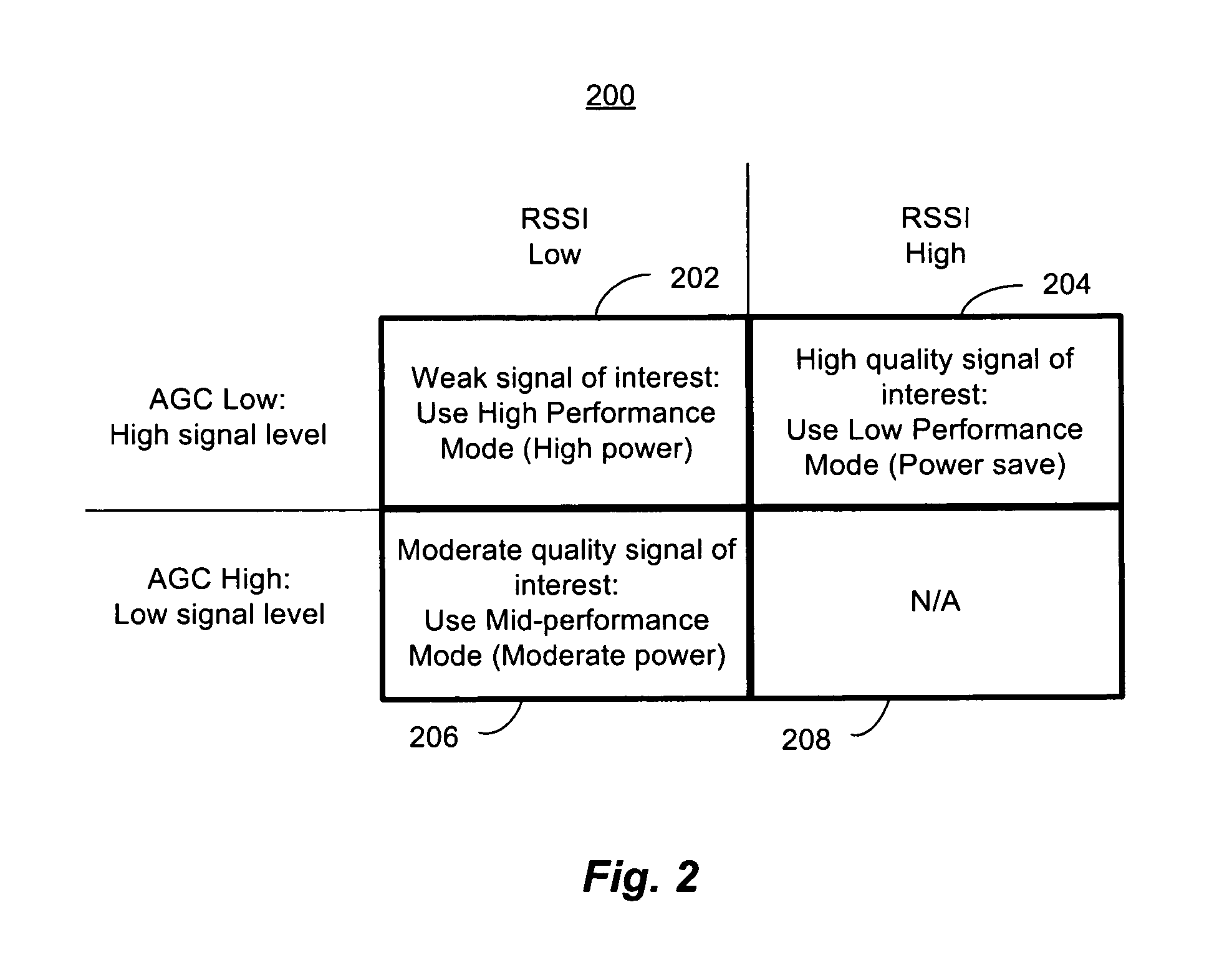Receiver dynamic power management
a power management and receiver technology, applied in the direction of gain control, transmission monitoring, helmet covers, etc., can solve the problems of increasing the cost of power consumption, and achieve the effects of reducing noise floor, high performance mode, and reducing ip3
- Summary
- Abstract
- Description
- Claims
- Application Information
AI Technical Summary
Benefits of technology
Problems solved by technology
Method used
Image
Examples
Embodiment Construction
[0014]FIG. 1 is a block diagram of a receiver 100 arranged for dynamic power management. The receiver 100 may include an antenna 102, a preselector 104, a low noise amplifier (LNA) 106 with variable gain under the control of a radio frequency (RF) automatic gain control 107 (AGC). An adaptive filter 108 may be coupled to the LNA 106. The exemplary receiver 100 may also include a mixer 110, a local oscillator 112, a variable gain amplifier 114 controlled by a intermediate frequency automatic gain converter (IF AGC) 116, an analog-to-digital converter 118, a digital filter 120, and an output 122. The output 122 may be coupled to a received signal strength indicator (RSSI) generator 124. In some embodiments an antenna may not be required, for example, in a cable television set-top box. The preselector 104 may be a bandpass filter, often passive, used to remove received signals outside of a band range of interest. The AGC 107, may adjust internal gain stages of the LNA 106, to selective...
PUM
 Login to View More
Login to View More Abstract
Description
Claims
Application Information
 Login to View More
Login to View More - R&D
- Intellectual Property
- Life Sciences
- Materials
- Tech Scout
- Unparalleled Data Quality
- Higher Quality Content
- 60% Fewer Hallucinations
Browse by: Latest US Patents, China's latest patents, Technical Efficacy Thesaurus, Application Domain, Technology Topic, Popular Technical Reports.
© 2025 PatSnap. All rights reserved.Legal|Privacy policy|Modern Slavery Act Transparency Statement|Sitemap|About US| Contact US: help@patsnap.com



